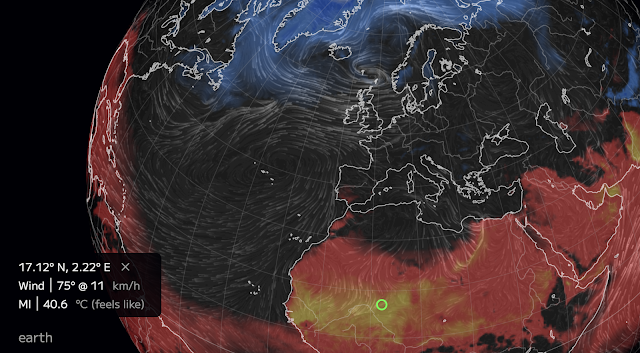This recent Guardian piece explores the increasingly unsustainable temperatures being endured by the poorest residents of Indian cities.
Cities are becoming unbearable for the poorest, who do not have the ability to cool themselves down.
One way to measure the problems of high heat and humidity is the Misery Index.
The Earth Null School website offers a visual set of data on which places are currently experiencing uncomfortable temperatures.
And also Wind Chill.
This shows what the air temperature "feels like" by combining the heat index and wind chill on one map.
Heat creates additional stress for the human body. Due to the higher exhaustion rate it is essential to increase the rate of hydration. Heat is potentially impacting the circulatory and nervous systems.
Beyond the direct health effects - such as well-being - heat has an effect directly and indirectly on several social-economic components. Findings and research already indicate that perceived temperature is increasing for most world regions. As a result, higher mortality rate is expected. Longer and more intense heat waves will slow down economic growth.
Go to the site, click EARTH and then choose MI from the Overlays. You can also see the SCALE by clicking EARTH again.


Comments